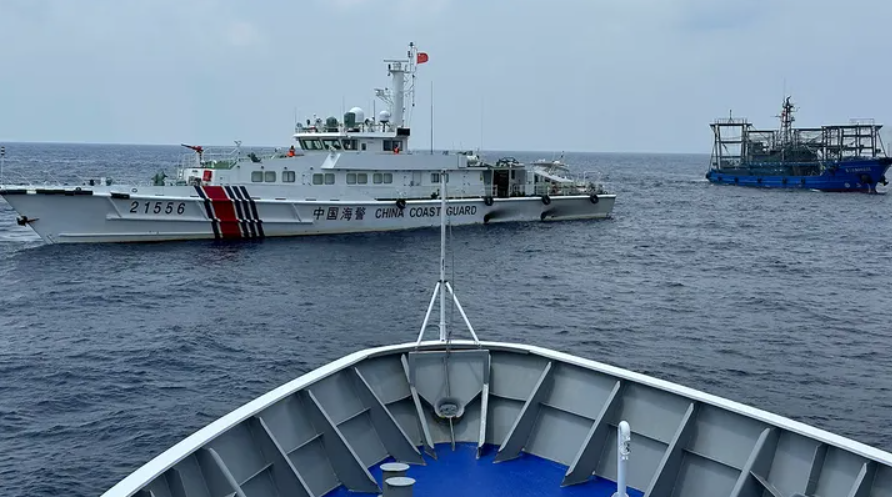The Philippines issued a strong statement on Friday, condemning China after a Chinese coast guard ship nearly collided with a Philippine patrol ship in the South China Sea. The incident occurred near Second Thomas Shoal, which both countries claim, and has raised concerns about escalating territorial disputes in the region.
Commodore Jay Tarriela, spokesperson for the Philippine coast guard, described the incident as a “violation of international law” and emphasized that the Chinese coast guard ship crossed dangerously close to the Philippine vessel, only a meter away.
The near-collision was witnessed by journalists, including The Associated Press, who were invited by the Philippine coast guard to highlight China’s aggressive actions in the South China Sea.
In response, the Chinese coast guard accused the Philippine vessels of entering their waters without permission and transporting building materials to a military boat that had run aground. The Chinese coast guard stated that it had given a stern warning to the Philippine vessels and closely monitored their activities.
This incident follows a previous confrontation on Wednesday when a Philippine coast guard vessel was surrounded by Chinese ships for eight hours. The tensions escalated when a Chinese coast guard ship closely pursued the Philippine vessels enroute to Second Thomas Shoal and formed a blockade.
The Philippines, backed by its treaty ally, the United States, has vowed to defend its territorial claims in the region. The fear of a major clash between China and the Philippines, and potentially involving the US, has intensified.
This latest incident serves as a stark reminder of the ongoing territorial disputes in the South China Sea and the potential for a larger crisis if tensions continue to escalate.
Chinese coast guard claims sovereignty over Second Thomas Shoal and warns the BRP Sindangan to leave to avoid any misunderstanding.
In response, the Filipino coast guard asserts Philippine rights and plans to continue with the supply delivery. This incident adds to the ongoing territorial disputes in the South China Sea, involving multiple countries and becoming a major point of contention in the US-China regional rivalry.
(Source: Associated Press)







